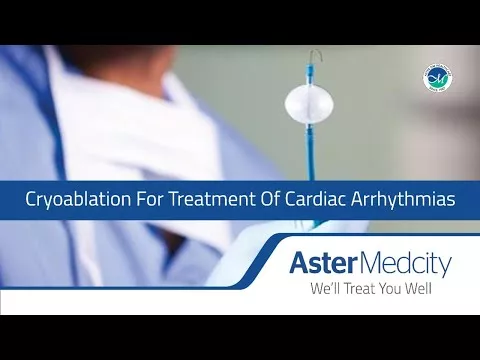What is Device Lead Extraction procedure?
Device lead extraction is a medical procedure performed to remove one or more leads from a patient's cardiovascular implantable electronic device (CIED), such as pacemakers, implantable cardioverter-defibrillators (ICDs), or cardiac resynchronization therapy (CRT) devices.
Device leads are thin, insulated wires that are inserted through a vein into the heart and connected to the CIED to deliver electrical signals or shocks to regulate the heart's rhythm. Over time, these leads may become damaged, infected, or malfunction, requiring removal.
The lead extraction procedure is typically performed by a cardiac electrophysiologist, a specialist in the electrical system of the heart. The procedure can be performed using different techniques, depending on the complexity and condition of the leads. Some common techniques include:
- Manual Traction: This involves gently pulling and twisting the lead to free it from the surrounding tissue. It is usually employed for leads that are easy to remove.
- Mechanical Dilatation: In this technique, a mechanical sheath or dilator is used to gradually dilate the tissue surrounding the lead, creating a pathway for extraction.
- Laser-Assisted Extraction: Laser energy is used to break down scar tissue and free the lead from adhesions. This technique is particularly useful when leads are firmly attached to the surrounding tissue.
- Excimer Laser Sheath: A specialized sheath with an excimer laser is used to remove the lead by ablating the scar tissue and breaking the adhesions.
- Powered Extraction Tools: Various mechanical tools, such as telescoping sheaths, rotating dilators, or rotating cutting tools, may be used to help remove the leads.
Before the procedure, patients are typically evaluated to assess the risks and benefits of lead extraction, including the condition of the leads, the patient's overall health, and any potential complications. The procedure is usually performed under general anesthesia, and the patient is monitored closely throughout the process.
Why and when it is recommended?
Lead extraction is recommended in several situations:
- Malfunctioning Leads: When leads become malfunctioning or fail to function as intended, they may need to be removed. Malfunctions can include lead fractures, insulation breaches, or electrical abnormalities. Malfunctioning leads can lead to improper pacing, ineffective defibrillation, or other issues with the functioning of the cardiovascular implantable electronic device (CIED).
- Infection: If a lead becomes infected, a condition known as lead-associated endocarditis may need to be removed. Infections can occur due to bacteria entering the body through the insertion site or migrating from another infection site. Infections around the leads can cause symptoms such as fever, swelling, redness, or drainage at the implant site. In some cases, the infection can spread and become life-threatening.
- Lead Damage or Fracture: Leads can become damaged or develop fractures over time, especially in long-term implantation scenarios. This can be caused by repetitive stress, external trauma, or normal wear and tear. Damaged or fractured leads may pose risks such as loss of pacing or defibrillation effectiveness or the potential for lead migration.
- Upgrade or Replacement: When a patient's CIED needs to be upgraded or replaced with a newer model, lead extraction may be required. This allows for the removal of the old leads before implanting new ones or connecting them to a new device. The decision to recommend lead extraction is based on various factors, including the patient's specific clinical situation, the condition of the leads, the risk of complications associated with lead retention, and the potential benefits of extraction. A thorough evaluation by a cardiac electrophysiologist or a specialized medical team is necessary to determine the need for lead extraction and to discuss the risks and benefits with the patient.
How is life after Device Lead Extraction procedure?
Life after device lead extraction can vary depending on several factors, including the patient's overall health, the reason for lead extraction, the complexity of the procedure, and any potential complications that may have arisen during or after the extraction. Here are some general considerations:
- Recovery Period: After the lead extraction procedure, patients typically require a period of recovery. The length of this recovery period can vary depending on the individual and the extent of the procedure. During this time, patients may experience discomfort or pain at the extraction site, and they may need to limit physical activities for a period as advised by their cardiac electrophysiologist.
- Follow-up Care: Following lead extraction, patients will likely have regular follow-up appointments with their cardiologist. These appointments are important to monitor healing, assess the functioning of any remaining leads or newly implanted leads, and ensure that the cardiovascular implantable electronic device (CIED) is working properly.
- Adjustment to Lifestyle: In some cases, lead extraction may require the implantation of new leads or a new CIED. Patients may need to adjust to any changes in their device programming or functionality. They may also need to make lifestyle adjustments, such as avoiding certain activities or following specific precautions to prevent lead damage or infection.
- Resumption of Activities: Once the recovery period is complete and the cardiac electrophysiologist gives clearance, patients can often resume their normal activities, including exercise and daily routines.
FAQs
At Aster Hospitals we provide the highest quality of care and a transformative experience for all your healthcare needs. With our network of multi-speciality hospitals, specialised doctors, and world-class technology, we bring global standards of medical care to our patients.
How is device lead extraction performed
Device lead extraction is typically performed in a specialized cardiac catheterization laboratory or operating room. It involves the use of specialized tools and techniques to carefully detach and remove the leads from the heart. The procedure may be done through a minimally invasive approach using laser or mechanical sheaths or, in more complex cases, may require open-heart surgery.
How should I prepare for device lead extraction
Your healthcare provider will provide specific instructions for preparation, but generally:
You may be asked to avoid eating or drinking for several hours before the procedure.
Inform your doctor about any medications, allergies, or medical conditions you have.
You may need to stop certain medications before the procedure, particularly blood thinners.
Arrange for someone to drive you home after the procedure.
Is device lead extraction a risky procedure?
Device lead extraction is generally safe, but it does carry some risks and complications, including:
Bleeding or hematoma at the extraction site.
Damage to blood vessels or the heart during the extraction process.
Infection.
Arrhythmias or heart rhythm disturbances during or after the procedure.
Rarely, the need for emergency open-heart surgery if complications arise.
Blogs
The source of trustworthy health and medical information. Through this section, we provide research-based health information, and all that is happening in Aster Hospital.







